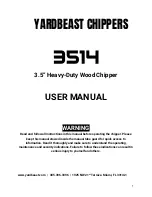
40
CTV-PRB004-EN
Medium-Voltage Starter Types (2,300–6,600 Volts)
Dimensions
Typical dimensions for both unit-mounted and remote-mounted autotransformer starters are the
same as the primary reactor starters shown in
Figure 28, p. 37
and
Figure 29, p. 37
. A chiller with
a unit-mounted autotransformer starter is pictured in
Figure 30, p. 38
. Always consult the submittal
drawings for as-built dimensions.
Solid state medium-voltage starters
If you look at the medium-voltage chiller industry, there are three primary electro-mechanical
starter types commonly used: 1) Full Voltage (X-Line), 2) Primary Reactor, and 3) AutoTransformer.
Of these, X-Line and Primary Reactor make up a majority of the business. The balance is in
AutoTransformer and some solid state. Cost increases as you move from X-Line to
AutoTransformer, as does the relative complexity, and size.These starters are considered simple
to begin with in comparison to solid state starters; however, we always want to use the simplest
design if the performance (inrush level) meets the requirements of the application.This is why the
X-Line type is often used at this voltage, because the amps are generally low to begin with based
on the voltage class (i.e., 4,160 volts). Trane has shipped thousands of chillers and starters with
these electromechanical starter types. We know of no better way to offer the highest reliability,
lowest inrush, and still meet the 30-year life expectancy.
Over the years solid state starters have been available, however when the pros and cons are
evaluated, a traditional electro-mechanical is typically the best choice. Many claim that the solid
state is a “soft starter.” What does this really mean? For most, this means a ramped inrush profile
with no transients; however, because we are dealing with large induction motors, the ramp-up is
quick to enable the required torque. We think you need to look at the inrush magnitude, and when
you review the starter types, the primary reactor is very comparable to a solid state. However, the
cost of the primary reactor is typically less, it is simpler, more reliable, does not have harmonic
aspects to consider, and is easier to service and maintain. In the end, the decision is up to the
customer.
Unit-Mounted Starter Top Hat—NEC 2005 Code Requirement
As outlined in
“Unit-Mounted Starter Top Hat—NEC 2005 Code Requirement,” p. 40
, NEC 2005
code requirements specify the use of shielded cables and stress cones for medium-voltage wiring.
For Trane
®
unit-mounted medium-voltage starters (and
“SMP, Supplemental Motor Protection—
Medium voltage only (Enhanced Electrical Protection Package option),” p. 66
) a supplementary
enclosure, or
top hat
, is shipped in the starter cabinet in order to fully enclose the incoming wire
and stress cones terminated at the starter.The
top hat
is shipped inverted in the starter cabinet to
avoid damage and must be properly configured in the field.The unit-mounted
top hat
is shown in
Figure 32, p. 41
.
CTV-PRB004.book Page 40 Sunday, December 18, 2011 6:39 PM
















































